-
 bitcoin
bitcoin $107208.295278 USD
-1.54% -
 ethereum
ethereum $3874.629914 USD
-1.38% -
 tether
tether $1.000440 USD
0.03% -
 bnb
bnb $1089.465513 USD
-5.53% -
 xrp
xrp $2.327672 USD
-1.65% -
 solana
solana $184.766505 USD
-0.73% -
 usd-coin
usd-coin $1.000076 USD
0.02% -
 tron
tron $0.310632 USD
-1.99% -
 dogecoin
dogecoin $0.187615 USD
-1.60% -
 cardano
cardano $0.633389 USD
-2.75% -
 ethena-usde
ethena-usde $0.999553 USD
0.03% -
 hyperliquid
hyperliquid $35.608231 USD
-4.13% -
 chainlink
chainlink $16.876114 USD
-3.98% -
 stellar
stellar $0.312239 USD
-0.91% -
 bitcoin-cash
bitcoin-cash $473.262969 USD
-7.09%
Why is my MetaMask swap failing?
MetaMask swaps can fail due to low gas, tight slippage, network congestion, insufficient ETH for fees, or poor liquidity—always check settings and network conditions.
Oct 17, 2025 at 04:01 am
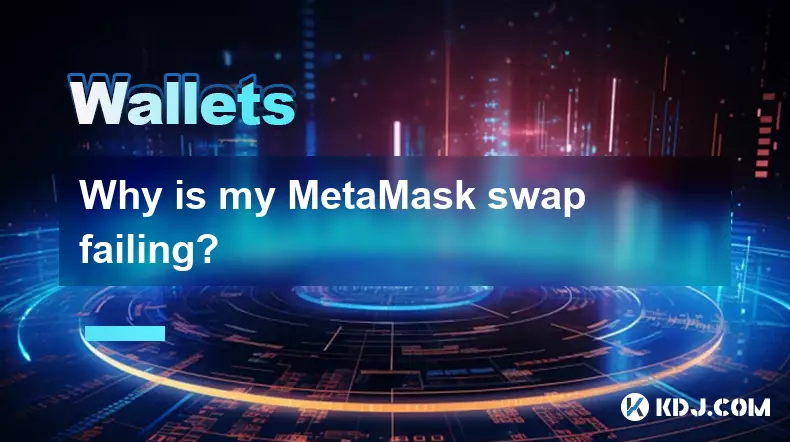
Common Reasons for MetaMask Swap Failures
1. Insufficient gas fees – Transactions on Ethereum and other EVM-compatible blockchains require gas to execute. If the selected gas fee is too low, miners or validators may ignore the transaction, causing the swap to stall or fail.
2. Price slippage tolerance too tight – Decentralized exchanges use liquidity pools, and prices can fluctuate rapidly. If the price moves beyond your set slippage tolerance (e.g., 0.5%), the swap will revert automatically to protect you from unfavorable rates.
Network congestion increasing failure rates – During peak times, blockchain networks become overloaded. This leads to delayed confirmations or dropped transactions even if gas is sufficient.4. Inadequate token balance including ETH for gas – Users often forget that swapping ERC-20 tokens still requires ETH (or the native token on other chains) to pay gas. A lack of ETH in the wallet will result in a failed transaction regardless of token availability.
5. Outdated MetaMask version or browser issues – Running an old version of the MetaMask extension or using unsupported browsers can lead to connectivity problems with DEX aggregators, resulting in failed swaps.
How Liquidity Impacts Your Swap Success
1. Low pool reserves on decentralized exchanges – Swapping large amounts through automated market makers like Uniswap may fail if there isn’t enough liquidity in the trading pair. The requested amount exceeds what’s available in the pool.
2. Front-running by arbitrage bots – High-value swaps on predictable routes can be exploited by bots that detect pending transactions and place higher-gas trades first, altering the price before your swap executes.
Inability to find optimal routing paths – MetaMask aggregates quotes from multiple DEXs, but complex multi-hop swaps might not always locate viable paths, especially on less popular token pairs.4. Temporary depegging in stablecoin pools – Pools involving stablecoins like DAI/USDC can temporarily lose their peg under stress, triggering built-in safety checks that cancel swaps to prevent losses.
5. Flash loan attacks affecting pricing oracles – Although rare, recent exploits involving flash loans have manipulated on-chain price feeds, leading to rejected trades due to abnormal valuations.
User Configuration and Wallet Settings
1. Incorrect network selection – Attempting a swap on Ethereum Mainnet when holding tokens on Polygon or Binance Smart Chain results in failure because assets aren't where expected.
2. Token approval limits reached – Before swapping a new token, MetaMask requests permission to spend it. If this approval was previously granted with a low limit, exceeding it without re-approval causes the swap to halt.
Custom RPC misconfigurations – Manually added networks with incorrect endpoints or blocked APIs disrupt communication between MetaMask and node providers, breaking quote retrieval and transaction broadcasting.4. Conflicting browser extensions – Other crypto wallets or ad blockers can interfere with MetaMask's ability to inject web3 objects into pages, preventing proper interaction with swap interfaces.
5. Session timeouts after prolonged inactivity – Leaving the MetaMask interface open for hours without action may cause authentication states to expire, leading to silent errors during submission.
Frequently Asked Questions
Why does my swap show “insufficient liquidity”? This message appears when no valid trading route exists for your desired amount. It could be due to small pool sizes, inactive markets, or attempting to swap more than the available reserves allow. Try reducing the amount or switching to a different DEX aggregator.
Can I recover funds if a swap fails? Yes, failed swaps do not transfer any tokens. However, gas fees are non-refundable since they pay for computational resources used in processing the attempt. Always ensure adequate ETH for gas before retrying.
What should I do if the transaction is stuck as “pending”? Open MetaMask, locate the pending transaction, and click “Speed Up.” This lets you resend the same transaction with a higher gas fee to incentivize faster confirmation. Alternatively, cancel it by sending a 0 ETH transaction with the same nonce.
Does enabling Expert Mode reduce swap failures? Expert Mode disables certain safeguards like automatic price impact warnings and allows tighter slippage settings. While it gives more control, it doesn’t inherently fix underlying issues like poor liquidity or network congestion.
Disclaimer:info@kdj.com
The information provided is not trading advice. kdj.com does not assume any responsibility for any investments made based on the information provided in this article. Cryptocurrencies are highly volatile and it is highly recommended that you invest with caution after thorough research!
If you believe that the content used on this website infringes your copyright, please contact us immediately (info@kdj.com) and we will delete it promptly.
- Crypto, Bear Market, and Analysts: Navigating the Uncertainty
- 2025-10-18 10:25:13
- Tezos on the Edge: Bollinger Bands and Crypto Market Weakness
- 2025-10-18 10:25:13
- Crypto News, October 2025: Missed Stories You Need to Know
- 2025-10-18 08:45:14
- PAX Gold (PAXG): Riding the Crypto Gold Rush in the Digital Age
- 2025-10-18 08:25:14
- Dogecoin, PEPE, and Remittix: Navigating the Crypto Landscape in Late 2025
- 2025-10-18 09:10:15
- XRP's Upside Potential: Market Analyst Highlights Key Trends
- 2025-10-18 10:30:14
Related knowledge
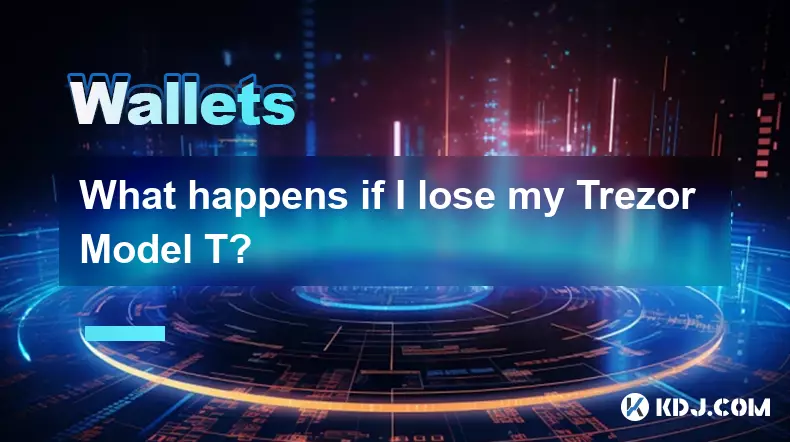
What happens if I lose my Trezor Model T?
Oct 18,2025 at 03:00am
Recovering Access to Your Cryptocurrency After Losing a Trezor Model T1. The Trezor Model T is a hardware wallet designed to securely store private ke...
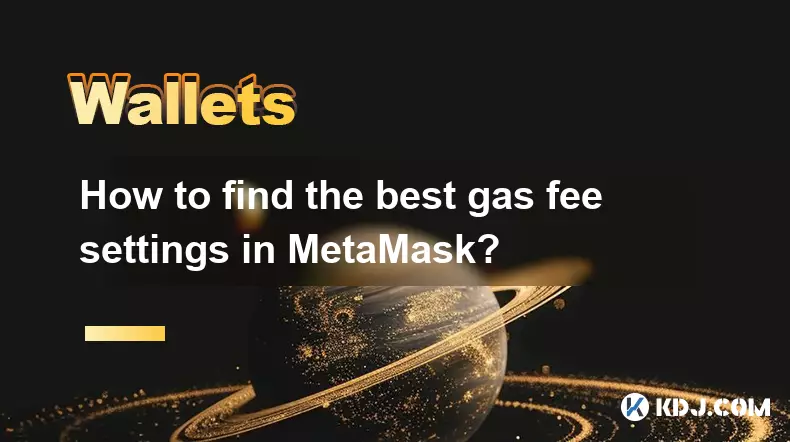
How to find the best gas fee settings in MetaMask?
Oct 17,2025 at 05:54pm
Understanding Gas Fees in MetaMask1. Gas fees are payments made by users to cover the computational energy required to process and validate transactio...

Why is my MetaMask swap failing?
Oct 17,2025 at 04:01am
Common Reasons for MetaMask Swap Failures1. Insufficient gas fees – Transactions on Ethereum and other EVM-compatible blockchains require gas to execu...
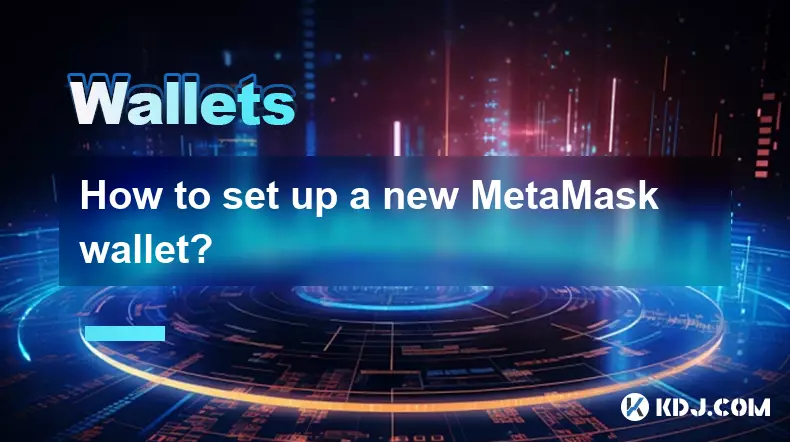
How to set up a new MetaMask wallet?
Oct 16,2025 at 11:37pm
Creating a New MetaMask Wallet1. Navigate to the official MetaMask website or download the MetaMask extension from your browser’s web store. Supported...
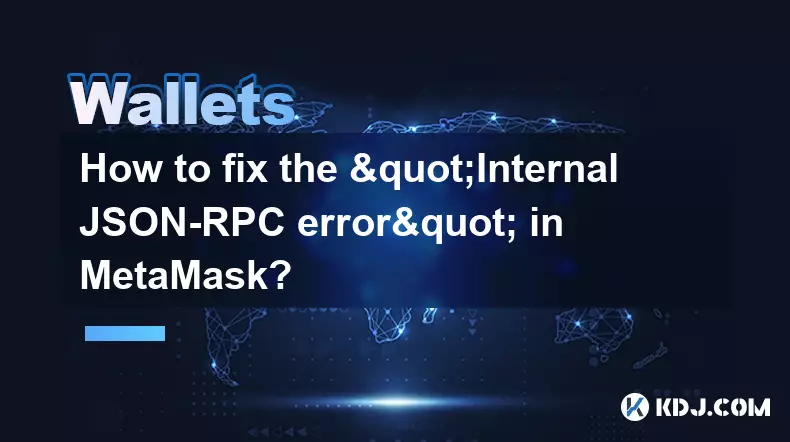
How to fix the "Internal JSON-RPC error" in MetaMask?
Oct 17,2025 at 08:00am
Understanding the 'Internal JSON-RPC Error' in MetaMask1. The 'Internal JSON-RPC error' is a common issue encountered by users interacting with decent...
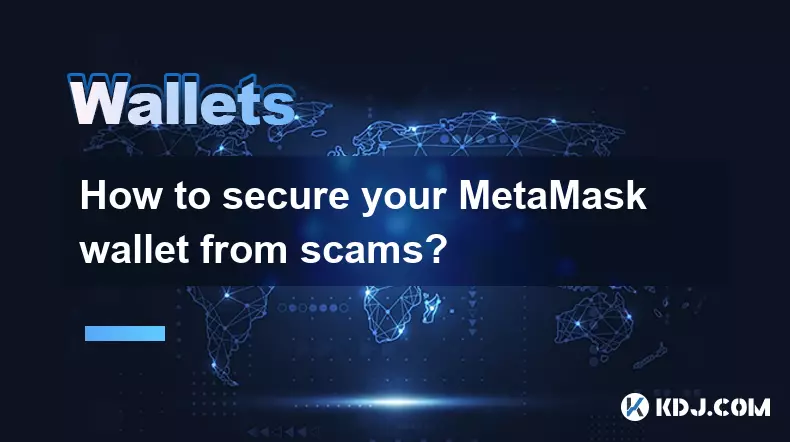
How to secure your MetaMask wallet from scams?
Oct 17,2025 at 02:55pm
Understanding Common MetaMask Scams1. Fake phishing websites are one of the most prevalent threats to MetaMask users. These sites mimic legitimate pla...

What happens if I lose my Trezor Model T?
Oct 18,2025 at 03:00am
Recovering Access to Your Cryptocurrency After Losing a Trezor Model T1. The Trezor Model T is a hardware wallet designed to securely store private ke...

How to find the best gas fee settings in MetaMask?
Oct 17,2025 at 05:54pm
Understanding Gas Fees in MetaMask1. Gas fees are payments made by users to cover the computational energy required to process and validate transactio...

Why is my MetaMask swap failing?
Oct 17,2025 at 04:01am
Common Reasons for MetaMask Swap Failures1. Insufficient gas fees – Transactions on Ethereum and other EVM-compatible blockchains require gas to execu...

How to set up a new MetaMask wallet?
Oct 16,2025 at 11:37pm
Creating a New MetaMask Wallet1. Navigate to the official MetaMask website or download the MetaMask extension from your browser’s web store. Supported...

How to fix the "Internal JSON-RPC error" in MetaMask?
Oct 17,2025 at 08:00am
Understanding the 'Internal JSON-RPC Error' in MetaMask1. The 'Internal JSON-RPC error' is a common issue encountered by users interacting with decent...

How to secure your MetaMask wallet from scams?
Oct 17,2025 at 02:55pm
Understanding Common MetaMask Scams1. Fake phishing websites are one of the most prevalent threats to MetaMask users. These sites mimic legitimate pla...
See all articles























![[4K 60fps] 5upreme by RoyalP (1 coin) [4K 60fps] 5upreme by RoyalP (1 coin)](/uploads/2025/10/18/cryptocurrencies-news/videos/k-fps-upreme-royalp-coin/68f2e6c9ef491_image_500_375.webp)


















































